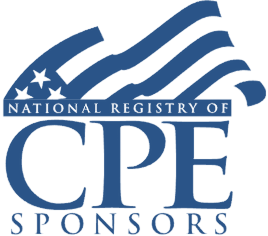- videocam On-Demand Webinar
- signal_cellular_alt Intermediate
- card_travel Tax Preparer
- schedule 110 minutes
Casualty and Theft Losses and Form 4684: Claiming Losses from Scams, Casualties, and Disasters
Deducting California Wildfire, Hurricanes Helene and Milton, and Ponzi Scheme Losses
Welcome! Save 30% on all CLE, CPE, and Professional Skills webinars, plus 15% off any annual pass with code HOLIDAY25
About the Course
Introduction
This course will cover deducting casualty losses inside and outside of federally declared disaster areas. Our income tax veteran will describe common casualty loss scenarios, including California wildfire losses, Hurricanes Helen and Milton relief for specific southeastern states, and Section 1033 involuntary conversions for tax professionals and business owners.
Description
Although the Tax Act of 2017 eliminated personal casualty loss deductions for the years 2018-2025, business casualty losses remain deductible, and personal losses within federally declared disaster areas are deductible. The Federal Disaster Relief Act of 2023 provides relief to individual taxpayers in federally declared disaster areas. The Act allows these taxpayers to deduct qualifying personal casualty losses even when they do not itemize. It also eliminates the $100 floor for deductible losses.
Tax practitioners continue to struggle with the calculations of the deductible portion of losses from these life-altering events. Insurance proceeds, settlements, and other relief received rightly alter the deductibility of losses. Calculating depreciation and the basis of the replacement property and preparing Form 4684 provide additional challenges as well.
Listen as Lawrence K.Y. Pon, CPA/PFS, CFP, EA, USTCP, AEP at Pon & Associates, explains eligibility for this deduction, calculating deductible losses, and timing the deduction of these benefits. Tax advisers need to recognize disaster relief available for taxpayers suffering from major disasters and grasp existing rules for the deductibility of these losses to obtain maximum tax savings for individuals and businesses.
Presented By

Mr. Pon has been in practice since 1986 providing comprehensive accounting, tax, payroll, and business advisory services. He specializes in tax preparation, tax representation, tax planning, business planning, financial planning, and estate planning. Services include IRS and state audit representation, business startup services, and charitable planning. Mr. Pon is a frequent author and lecturer to financial and legal professionals and the public on tax and financial planning topics.
-
BARBRI is a NASBA CPE sponsor and this 110-minute webinar is accredited for 2.0 CPE credits.
-
BARBRI is an IRS-approved continuing education provider offering certified courses for Enrolled Agents (EA) and Tax Return Preparers (RTRP).
Date + Time
- event
Wednesday, May 7, 2025
- schedule
1:00 p.m. ET./10:00 a.m. PT
- Casualty losses
- Personal
- Business
- Timing the loss deduction
- Calculating the loss and deduction
- Section 1033 involuntary conversions
- Insurance proceeds, settlements, other relief payments
- Depreciation of replacement property
- Federal disaster relief
- COVID-19 and disaster relief
- Preparing Form 4684
The panelist will review these and other critical issues:
- Properly preparing Form 4684, Casualties and Thefts
- IRS relief for taxpayers impacted by the California wildfires and other disasters
- Relief available under the Federal Disaster Relief Act of 2023
- Pending disaster relief legislation
- The impact of insurance reimbursements and settlements loss deductions
Learning Objectives
After completing this course, you will be able to:
- Identify specific areas eligible for federal disaster relief
- Determine deductible casualty loss amounts under specific scenarios
- Ascertain which taxpayers may qualify for Hurricanes Helene and Milton relief
- Decide which year to deduct certain casualty losses
- Field of Study: Taxes
- Level of Knowledge: Intermediate
- Advance Preparation: None
- Teaching Method: Seminar/Lecture
- Delivery Method: Group-Internet (via computer)
- Attendance Monitoring Method: Attendance is monitored electronically via a participant's PIN and through a series of attendance verification prompts displayed throughout the program
- Prerequisite: Three years+ business or public firm experience preparing complex tax forms and schedules, supervising other preparers or accountants. Specific knowledge and understanding of individual income taxation, including itemized deductions, individual income tax credits, net operating loss limitations including carrybacks and carryforwards.

BARBRI, Inc. is registered with the National Association of State Boards of Accountancy (NASBA) as a sponsor of continuing professional education on the National Registry of CPE Sponsors. State boards of Accountancy have final authority on the acceptance of individual courses for CPE Credits. Complaints regarding registered sponsons may be submitted to NASBA through its website: www.nasbaregistry.org.

BARBRI is an IRS-approved continuing education provider offering certified courses for Enrolled Agents (EA) and Tax Return Preparers (RTRP).

BARBRI CE webinars-powered by Barbri-are backed by our 100% unconditional money-back guarantee: If you are not satisfied with any of our products, simply let us know and get a full refund. Contact us at 1-800-926-7926 .
Unlimited access to premium CLE courses:
- Annual access
- Available live and on-demand
- Best for attorneys and legal professionals
Unlimited access to premium CPE courses.:
- Annual access
- Available live and on-demand
- Best for CPAs and tax professionals
Unlimited access to premium CLE, CPE, Professional Skills and Practice-Ready courses.:
- Annual access
- Available live and on-demand
- Best for legal, accounting, and tax professionals
Unlimited access to Professional Skills and Practice-Ready courses:
- Annual access
- Available on-demand
- Best for new attorneys
Related Courses

Partnership Terminations: Sale or Abandonment of an Interest, Retirement or Death of Partner, and Closing the Entity
Wednesday, February 18, 2026
1:00 p.m. ET./10:00 a.m. PT

UK-Based Retirement Accounts for U.S. Taxpayers: Mastering Reporting, Maximizing Planning Opportunities
Tuesday, January 27, 2026
1:00 p.m. ET./10:00 a.m. PT

Tax Research Techniques: Internet Tools, AI Caveats, Methodology, Documentation and Communication of Results
Wednesday, January 21, 2026
1:00 p.m. ET./10:00 a.m. PT

The Impact of OBBBA on Trusts and Estates: New Planning Opportunities
Monday, January 26, 2026
1:00 p.m. ET./10:00 a.m. PT
Recommended Resources

How CPE Can Bridge the Gap Between What You Know and What You Need to Know
- Career Advancement


